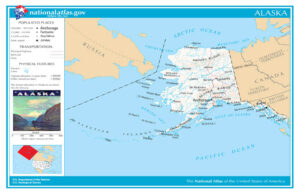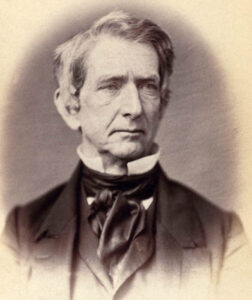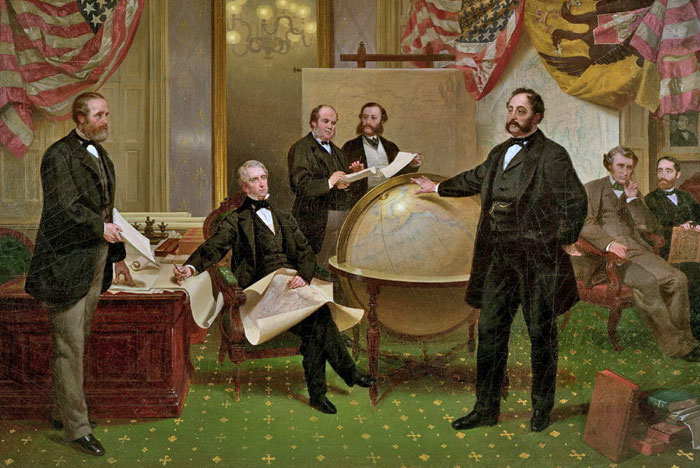The purchase of Alaska in 1867 marked the end of Russian efforts to expand trade and settlements to the Pacific coast of North America. It became an important step in the United States’ rise as a great power in the Asia-Pacific region.
In 1725, when Russian Czar Peter the Great dispatched Vitus Bering to explore the Alaskan coast, Russia had a keen interest in this region, which was rich in natural resources and lightly inhabited. Americans soon competed with Russian explorers and traders as the United States expanded westward in the early 1800s. St. Petersburg, however, lacked the financial resources to support significant settlements or a military presence along the Pacific coast of North America, and permanent Russian settlers in Alaska never numbered more than 400. Defeat in the Crimean War further reduced Russian interest in this region.
Russia offered to sell Alaska to the United States in 1859, believing the United States would offset the designs of Russia’s greatest rival in the Pacific, Great Britain. The looming U.S. Civil War delayed the sale; however, after the war, Secretary of State William Seward quickly took up a renewed Russian offer and, on March 30, 1867, agreed to a proposal from Russian Minister in Washington, Edouard de Stoeckl, to purchase Alaska for $7.2 million. The Senate approved the purchase treaty on April 9; President Andrew Johnson signed the treaty on May 28, and Alaska was formally transferred to the United States on October 18, 1867. This purchase ended Russia’s presence in North America and ensured U.S. access to the Pacific northern rim.
For three decades after its purchase, the United States paid little attention to Alaska, which was governed under military, naval, or Treasury rule or, at times, no visible rule at all. Seeking a way to impose U.S. mining laws, the United States constituted a civil government in 1884. Skeptics had dubbed the purchase of Alaska “Seward’s Folly.” However, the former Secretary of State was vindicated when a significant gold deposit was discovered in the Yukon in 1896, and Alaska became the gateway to the Klondike gold fields. The strategic importance of Alaska was finally recognized in World War II.
Alaska became a state on January 3, 1959.
Compiled & edited by Kathy Alexander/Legends of America, updated March 2024. Source: Office of the Historian
Also See:



